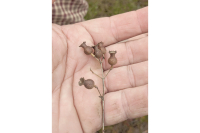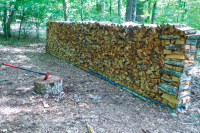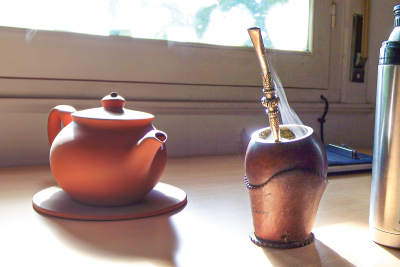‘Still plenty to do’: Continual curiosity key for awarded botanist
When Ron Lance found out he’d been chosen for a prestigious Southern Appalachian Botanical Society award, he was astonished.
Toxic plants of Appalachia
From time to time, I’ve discussed in this space various plants the Cherokees and early settlers utilized for medicinal, edible and utilitarian purposes. The reverse side of that topic would be those plants that were dangerous to use.
The Naturalist's Corner: Aster-risk*
Blue, white, lavender and purple corymbs, racemes and panicles will glow from shadowy woods and blaze from sunny meadows from now until the first hard, killing frost. Asters comprise a large beautiful complex and challenging group of wildflowers to pin down. More than 20 species of the genus aster have been recorded from the Great Smoky Mountains National Park. Because of considerable variation within species and the tendency of species to hybridize, even competent botanists are sometimes left to a “judgment” call when trying to identify certain individuals.
The Naturalist's Corner: Santee surprise
During our annual summer beach trip to Isle of Palms, I often manage to sneak away one morning to visit Santee Coastal Reserve for an annual red-cockaded woodpecker fix. State and federal agencies have been successfully enhancing the endangered red-cockaded woodpecker population at Santee Coastal for a number of years. It’s a great place to see these noisy little woodpeckers as they nest along the main dirt road through the reserve and all you have to do is drive slowly along until you hear the constant chatter of a colony.
Horsemint is a fascinating, useful plant
Editor’s note: This article originally appeared in a July 2010 edition of The Smoky Mountain News
Each July since 1991, I’ve led field trips along the Blue Ridge Parkway offered as part of the Native Plants Conference sponsored by Western Carolina University. This year’s outings (July 25) will have taken place by the time you read this.
Magnolia trifecta
It’s May! That means my 2019 Forest Service bird survey has begun — another six weeks of roaming the wilds of the Nantahala and Pisgah national forests. It’s clearly a bird-centric six weeks but there is, of course, a lot more to see in our national forests. This past weekend I was fortunate enough to hit a magnolia trifecta. I found all three of the common magnolias — genus Magnolia — (just so you sticklers don’t throw Liriodendron in there) in flower.
The first truly showy woodland flower
Editor’s note: This column first appeared in The Smoky Mountain News in May 2005.
Hepatica doesn’t display the earliest flowers that bloom each year. Those of bitter cress, henbit, purple dead nettle, bird’s-eye speedwell, and others appear in open moist sunny spots by late January or early February. But to my way of thinking, year in and year out, hepatica is the earliest of the truly showy woodland wildflowers. Trailing arbutus has a reputation in this regard. One often reads of those who discover it blooming under late snows. But I hardly ever observe arbutus doing much more than budding before April. Hepatica can still be found in bloom in early May in the higher elevation hardwood forests.
Flowers with stories: Nodding Trillium Garden opens in Cullowhee
No matter what scale of time you’re using, the newly opened Jean Pittillo Nodding Trillium Garden in Cullowhee has deep roots.
“Let’s go back about 400 to 700 million years,” said landowner Dan Pittillo as he began his explanation to the group gathered to experience the wildflower trail’s grand opening April 17.
Blackgum tree trunks have many uses
Editor’s note: This article first appeared in The Smoky Mountain News in March 2002.
Some months ago I wrote about how the early white settlers here in the Blue Ridge utilized the natural bends in sourwood tree trunks as runners for sleds. Lately I’ve been thinking about the way they utilized the hollow trunks of blackgum trees.
Galax’s enduring popularity
Galax is an evergreen groundcover found throughout the Blue Ridge. The plant can thrive in various settings, but the ideal habitat is a cool moist site with partial shade and acidic soil. It occurs in extensive patches that can reward the observer in every season. As Peter White observed in Wildflowers of the Smokies (1996), “In early spring, its round, evergreen leaves carpet the dormant forest floor. By summer, a tall pillar of tiny white flowers line many park trails. Then, as winter approaches, the deep green leaves turn bronze and crimson to contrast against the coming snows.”









